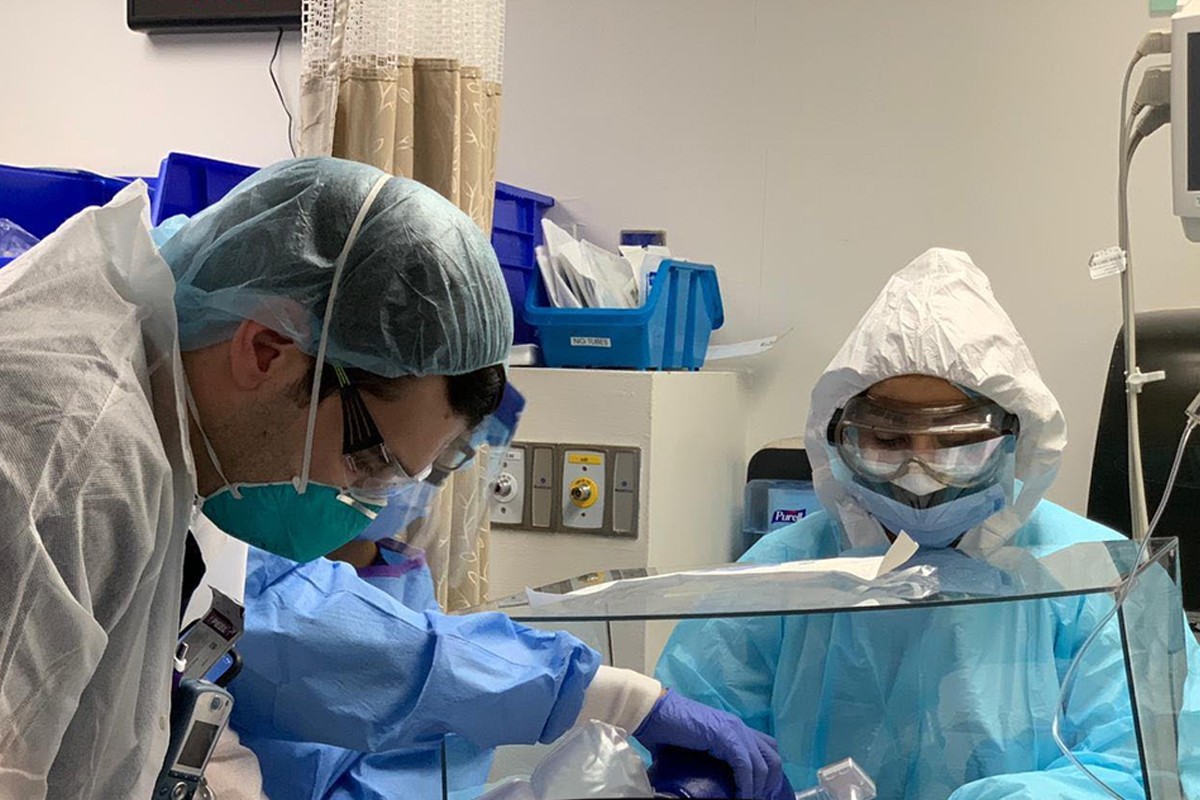You’re a doctor in the intensive care unit and you’re about to insert a breathing tube down the airway of a patient with COVID-19. You’re wearing an N95 mask, a gown, gloves and other protective gear, but there’s still a potential danger. You’re looking down. The patient, though fully sedated, is looking up and will very likely cough when the tube is inserted. With the two of you only inches apart, there’s a considerable risk that droplets could land on the exposed part of your face.
When Teachers College doctoral student Sam Thanapornsangsuth heard this scenario from Brian Chang, a resident in Emergency Medicine at Brooklyn Hospital Center (and the husband of a TC alumna), she felt sure there had to be a reasonable solution. She contacted Paulo Blikstein, Associate Professor of Communications, Media & Learning Technology Design, who is no medical expert, but as Director of TC’s Transformative Learning Technologies Lab, uses computer modeling, robotics, digital fabrication, and rapid prototyping in his efforts to improve the way young people learn science, engineering and mathematics.
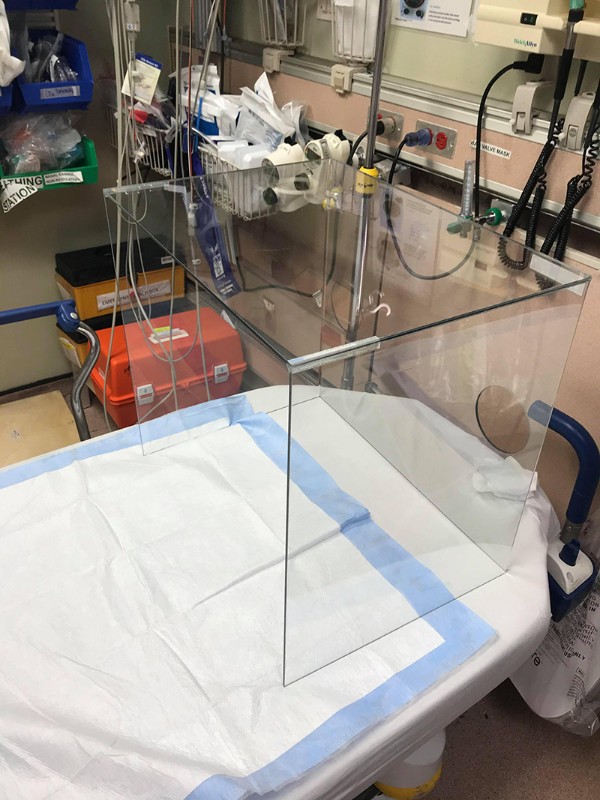
Thanapornsangsuth, Blikstein and his frequent TC collaborator, Nathan Holbert, Assistant Professor of Communication, Media & Learning Technologies Design, went online to see what kinds of equipment might already exist. After dismissing some highly expensive commercial products, they turned up the “Aerosol Box,” a cube-shaped transparent acrylic shield, with arm-holes, created by Lai Hsien-yung, an anesthesiologist at Mennonite Christian Hospital in Hualien, Taiwan, to help physicians perform endotracheal intubations — the very procedure in question.
“We reached out to the doctor, and he had published these designs for free use,” Blikstein recalls. “Brian then made a cardboard model and took it to the hospital, and we used his insights to decide on the dimensions. Then we made some improvements — for example, he wanted a plastic curtain on the front for added protection.”
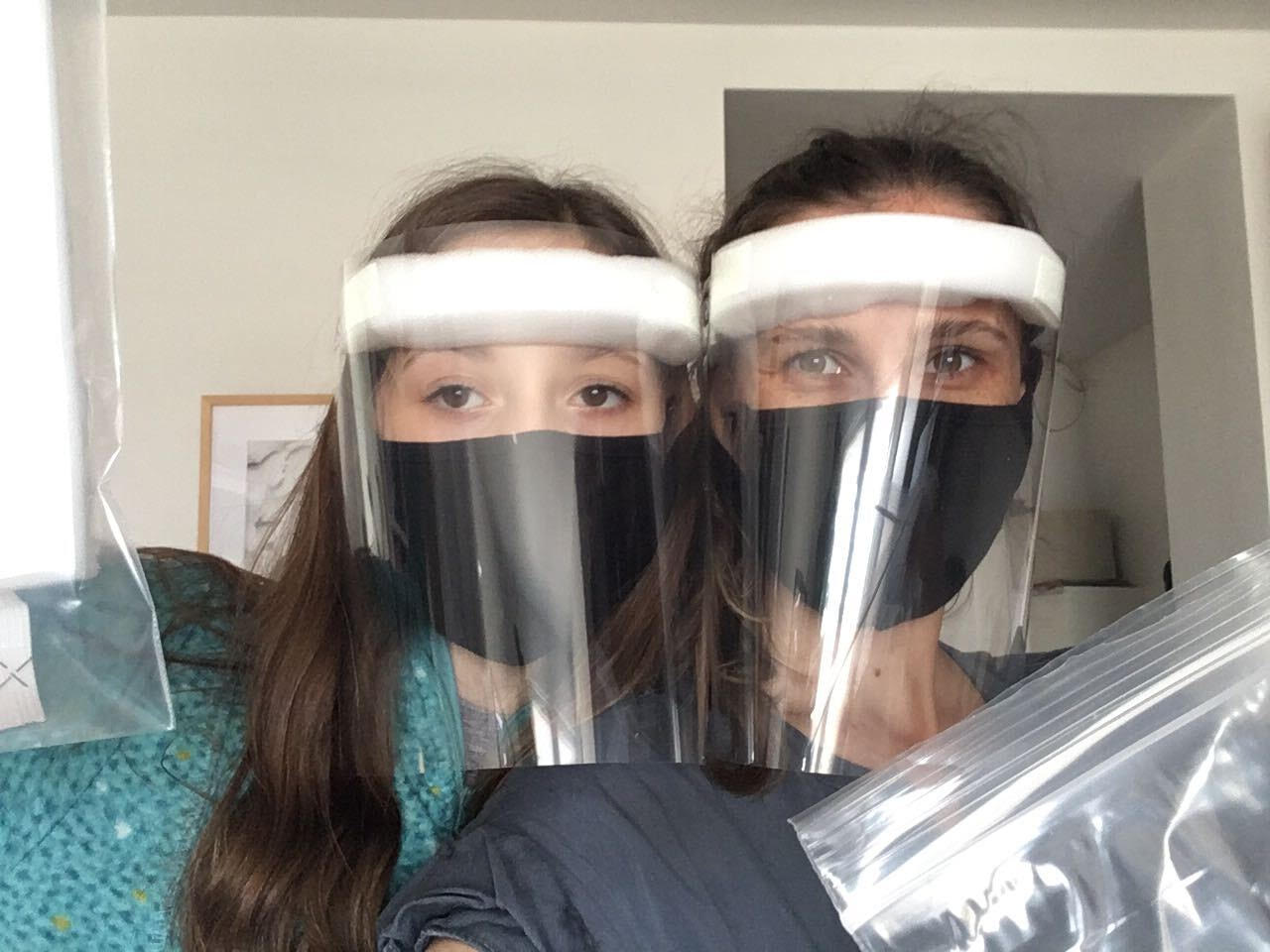
AGENTS OF SHIELD Isa Correa (right), a TC doctoral student, and her daughter, Fiore Echecopar, test out the gear they’ve created. (Photo courtesy Paulo Blikstein)
Thanapornsangsuth and another student who works with Blikstein and Holbert, Yipu Zheng, then searched for plastic suppliers in the New York City area. Many were closed and others had very long delivery times, but one plastic fabrication shop in Long Island City, Advanced Model Designs, was willing to reduce prices and quickly deliver transparent polycarbonate rather than acrylic (the latter degrades and shatters when repeatedly sterilized with alcohol). Initially the plan called for the TC team to build the boxes using the laser cutter in the Transformative Technologies Lab. But then Dan Brown, Advanced Model Designs’ proprietor, said he could do the cutting and assembly as well. Brown also cut his price by half, to just $100 per box, in order to get more boxes into hospitals.
“We were really happy to work with Dan,” Blikstein says. “He’s basically doing the work at little more than cost, and the business he’s getting from us has helped him to keep his shop open and his staff employed.”
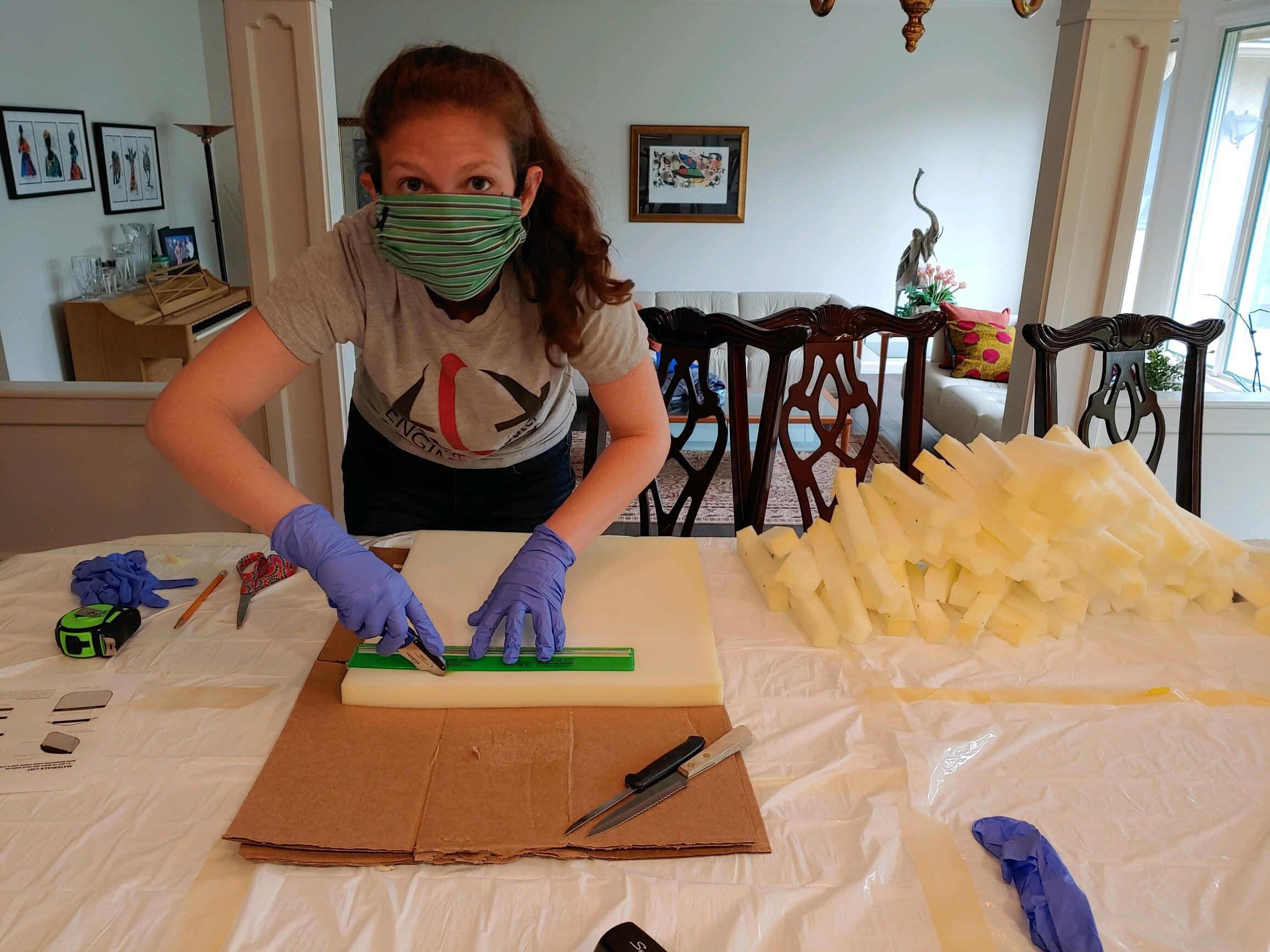
ASSEMBLY LINE Laura Bloch, another TC doctoral student, puts together face shields at home. (Photo courtesy Paulo Blikstein)
Since late March, in what they now call the Teachers College Intubation Box Project, the TC group has been sending an Uber cab out to Long Island City to receive the assembled boxes and drop them off at hospitals. To date, a total of 19 boxes have been distributed to Brooklyn Center Hospital, Jamaica Hospital Medical Center and Elmhurst Hospital in Queens, Hospital for Special Surgery in Manhattan, North Central Hospital, Montefiore Hospital in the Bronx, Sinai Grace Hospital and St Anthony's Hospital in Chicago, and Detroit Receiving Hospital in Detroit.
Meanwhile, Thanapornsangsuth says, “we’ve been working closely with doctors — mainly anesthesiologists, and those working in ERs and ICUs — to iterate and improve our designs.”
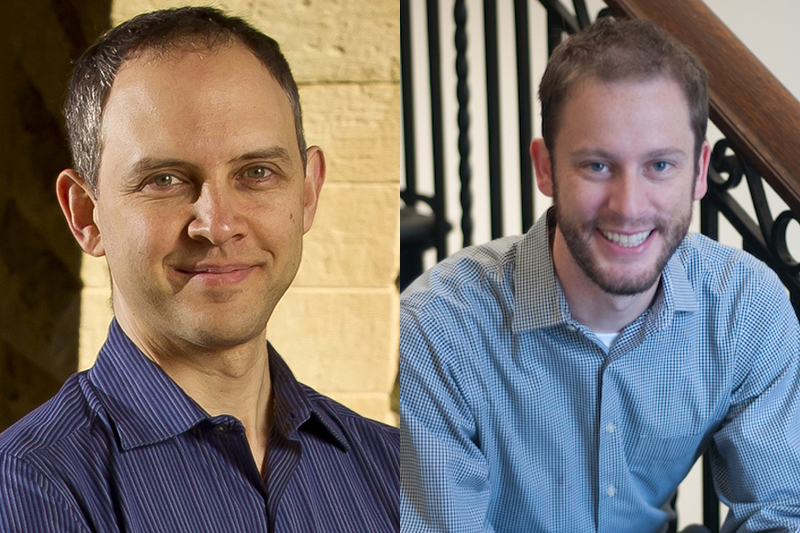
FREQUENT COLLABORATORS Faculty members Paulo Blikstein (left) and Nathan Holbert brought their student lab teams together and gave them the resources to make protective equipment. (Photo: TC Archives)
The students have mounted a fundraising drive among faculty, students and other friends of the College to enable productions of a large volume of boxes. Thus far, the effort has raised a total of $1,741.
[To donate to the drive, visit: https://tinyurl.com/Covid19TC. Learn more about TC’s Program in Communication, Media & Learning Technologies Design in the Department of Mathematics, Science & Technology.]
Responding to the nationwide lack of protective face masks, Thanapornsangsuth, Zheng and a group of other students who normally work in Holbert’s Snow Day Learning Lab — Nicola Law, Isa Correa, Biswajit Boity, Laura Bloch and Monica Chan — have also launched an effort they call Face Shields from Home. With TC closed, Holbert ordered the components for face shields — elastic, transparent sheets, foam cushion — and sent quantities to each student’s home. The U.S.-based members of the group made 100 pieces each, while Chan, who has relocated to Singapore during the pandemic, worked from afar to identify contacts at various hospitals.
The TC ethos is that we should always do something to help the community. We can’t get out of the house, but it was great to find ways to connect people and create this distributed assembly line to help our frontline healthcare workers. It is the least we can do.
—Paulo Blikstein
Holbert subsequently learned from a neighbor that her hospital was looking for “ears savers” — items that help protect the ears from chafing from wearing a medical face mask all day. Correa responded by leading a drive to laser-cut hundreds of pieces of ears saver and donating them to Montefiore Medical Center.
“We collaborated with #GetMePPE Chicago and were able to donate 8 more boxes to 3 hospitals in Chicago and Detroit.” Thanapornsangsuth wrote in an email in late May. “And Laura Bloch, who is now in Ohio. donated face shields to Franklin County Emergency Management and Homeland Security.”
“The students are really the driving force behind this entire effort – and I think the TC ethos is that we should always do something to help the community,” Blikstein says. “We can’t get out of the house, but it was great to find ways to connect people and create this distributed assembly line to help our frontline healthcare workers. It is the least we can do.”
